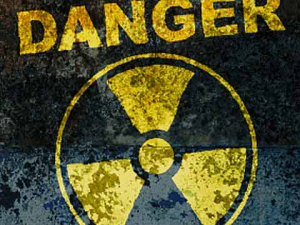 At the end of the day energy comes down to economics.
At the end of the day energy comes down to economics.
Drilling oil out of the deserts of the Middle East is inherently more profitable than boiling them out of Canadian boreal forest.
Any deal at Copenhagen will hinge on how much the rich are prepared to pay the poor.
There will be no clean coal, unless the government passes the huge risk of unproven CCS onto the consumer.
And likewise nuclear. It will not be safety, the waste issue or the public unacceptability that will kill off nuclear it will be the finances.
The UK government may have said yes to ten new nuclear plants, but at the moment the economists are saying the economics do not stack up.
For years the UK government has said it could only grasp the nuclear nettle by saying there will be no public subsidy.
And for years the industry’s critics have argued that, without subsidy, there cannot be any nuclear. They argued that the government would somehow offer hidden subsidies by rigging the carbon market to favour nuclear at the expense of renewables.
What the nuclear industry needs is certainty – so if they can be guaranteed some kind of price over carbon for the decades then they might be able to go ahead.
Or will they? On the day that the government announced new nukes, the economists at Citigroup issued a devastating critique, called “new nuclear – the Economics say no”
And the reason for the resounding NO is that too much of the financial risk is still on the industry, rather than the government and hence the consumer. “The government has not announced any direct support for new nuclear. The government still seems to expect the private sector to take an unacceptable level of risk.”
Although by fast-tracking the UK planning process, the government has reduced the “Planning Risk” for the industry, the industry still faces four risks that need to be overcome. Three of these risks are so great that they are described as “corporate killers” by Citigroup.
The three corporate killers are Construction, Power Price and Operational. According to Citigroup, they are “so large and variable that individually they could each bring even the largest utility to its knees financially.”
As Citigroup’s briefing paper acknowledges “Nowhere in the world have nuclear power plants been built on this basis.”
It says: Indeed, “at no time, anywhere in the world, has a utility built a new nuclear power station and taken the full Construction, Power Price and Operational Risk.” Each one of these risks could bring a giant utility to its knees.
And this is before identifying another huge financial black-hole: decommissioning.
The only way the government can fix the conundrum of “funding the nuclear industry, whilst privately not funding it” is to fix the carbon price that makes nuclear be economic. However to get a price that pleases nuclear, the traditional fossil fuel operators will be up in arms.
Either way, you can be sure that if new nukes get the goahead, then it will be you paying for it.
One way or another.

This is a very insightful article. I tend to agree the financial risks remain a challenge for new nuclear projects. I also believe that much of the risk can be managed with an intelligent regulatory framework that produces stability and certainty. The Citibank report cites uncertainty in construction costs, power price, and operational costs but appears to use worse case scenarios and first-of-a-kind projects to support their case.
For example, they use the cost over runs and delays at Olkiluoto, the first EPR reactor project as evidence that reactor builders are unlikely to meet schedules and control costs, but fail to mention the Ling’ao 1, Quinshan 2-B, and other reactor projects in Asia that were completed on or ahead of schedule. Also, they estimate the new plants would achieve about an 80% capacity factor when recent US experience shows consistent performance at >90%.
John Wheeler
Producer and Host
This Week in Nuclear
Unfortunately the article does not include after the fact costs such as babysitting and decommissioning of nuclear power plants. The US has spent several hundred million dollars to find a resting place for the radioactive waste and the latest news indicates that this project may very well be abandonned. Who’s paying for that?
Full cycle costs cannot be calculated on any reactor build because the radioactivity in the building materials prevents the site from being dismantled adn returned to pre-reactor times. For example the Gentilly 1 reactor in Quebec Canada operated for a mere 180 days and then was abandonned due to safety issues. It was decommissioned in 1986 and at the time sources indicated that it would take another 50 years to figure out what to do with it. There is no way that anyone can calculate the cost of something 10 years down the road let alone 50 years from now! I guess the secret to building nuclear power plants is to convince governments that it’s OK for future generations to deal with the leftovers. I’m not so sure our children will be prowd of their expensive inheritence.